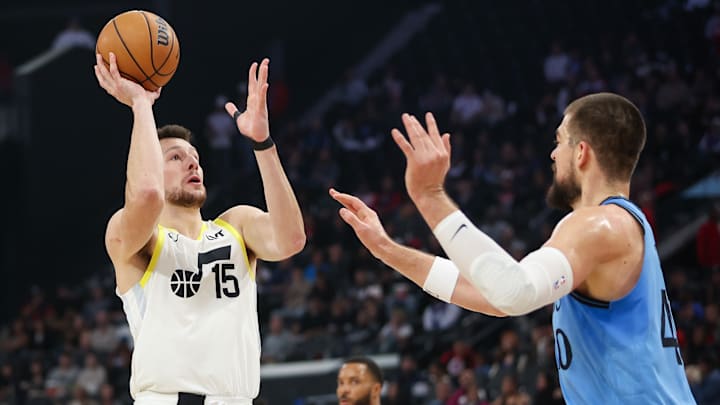February has begun and the race to the 2025 NBA trade deadline has thus taken center stage. All 30 teams have less than a week to evaluate their options, with the Utah Jazz entering this pivotal stage as sellers with an intriguing pool of resources.
The festivities have officially begun for Danny Ainge and the Jazz, as they've made a relatively low-profile move that could have significant long-term ramifications for both sides.
Utah and the LA Clippers brought the final week before the trade deadline to life early on Saturday, Feb. 1. It was a welcome change of pace for many who have been awaiting noteworthy deals, even if the pieces moved didn't create quite the excitement some had anticipated.
According to Shams Charania and Bobby Marks of ESPN, the Clippers will send Mo Bamba, PJ Tucker, a future second-round draft pick, and cash to the Jazz for Drew Eubanks and Patty Mills.
The question is: Who won this deal?
Grade the Trade: How did the Jazz do?
This trade was a clear statement by Utah that the future is the top priority ahead of the trade deadline. Perhaps they can extract some level of value from Bamba and Tucker, but this appears to be a simple matter of acquiring another draft pick.
True to form, Ainge has continued the trend of accumulating draft picks that could be utilized to either land franchise-altering talent via the NBA Draft or a big-name player through a trade.
Bamba, 26, could be an interesting fit as a shot-blocking big with an effective outside shot. Perhaps Jazz head coach Will Hardy will find a place in the rotation for Bamba as a complement to Walker Kessler and Lauri Markkanen rather than simply discarding his talent.
Tucker, 39, could also act as a leader in the locker room with his years of experience and defensive acumen.
The more likely outcome, however, is that the Jazz will happily accept a future second-round draft pick in exchange for two players it didn't have plans for moving forward. Mills will become an unrestricted free agent in July and Eubanks has a non-guaranteed $4.75 million salary for 2025-26.
To put it simply: Turning two players who might not have even been on the roster in a matter of months into a second-round draft pick is a successful move.
The second-rounder may not yield much value in the long run, but finding long-term value in a place where there didn't appear to be any is a win.
Grade the Trade: How did the Clippers do?
The Clippers completed this trade with a clear intention in mind: Financial flexibility. By completing the move, LA has created the opportunity to be active at the trade deadline and thus improve a team that's already on pace to secure the No. 6 seed in the Western Conference standings.
As explained by Marks, the Clippers created flexibility ahead of the trade deadline and buyout market by bringing themselves below the luxury tax.
The trade not only brings the LA Clippers below the luxury tax but gives them optionally at the deadline and buyout market.
— Bobby Marks (@BobbyMarks42) February 1, 2025
The Clippers are now $4M below the tax and have enough flexibility below the first apron.
Tucker, Bamba and Mills are on expiring contracts.
Eubanks has…
As a result, Marks reports that the Clippers will be given two trade exceptions to pair with the incoming potentially expiring contracts possessed by Eubanks and Mills.
Clippers also create a $6.5M and $2.1M trade exception that is available to use. https://t.co/kbsjjqsMK7
— Bobby Marks (@BobbyMarks42) February 1, 2025
That might not have Clippers fans filling the streets with songs of championship aspirations, but it's a wise and necessary move by the LA front office. The Clippers can now orchestrate moves they were previously unable to and attempt to capitalize on the window James Harden and Kawhi Leonard have extended.
Compounded by Mills and Leonard previously playing together with the San Antonio Spurs, and Eubanks functioning as a quality backup big, this is a solid deal for the Clippers.
It's another example of the next move determining the true quality of the opportunities this trade has created, but turning a player who hasn't seen the court in 2024-25 and a fringe backup into financial flexibility is certainly a win.
